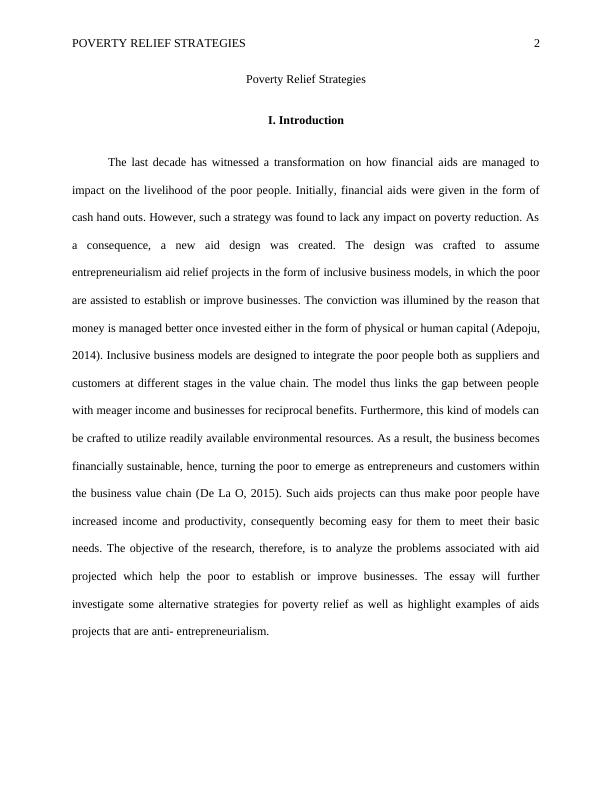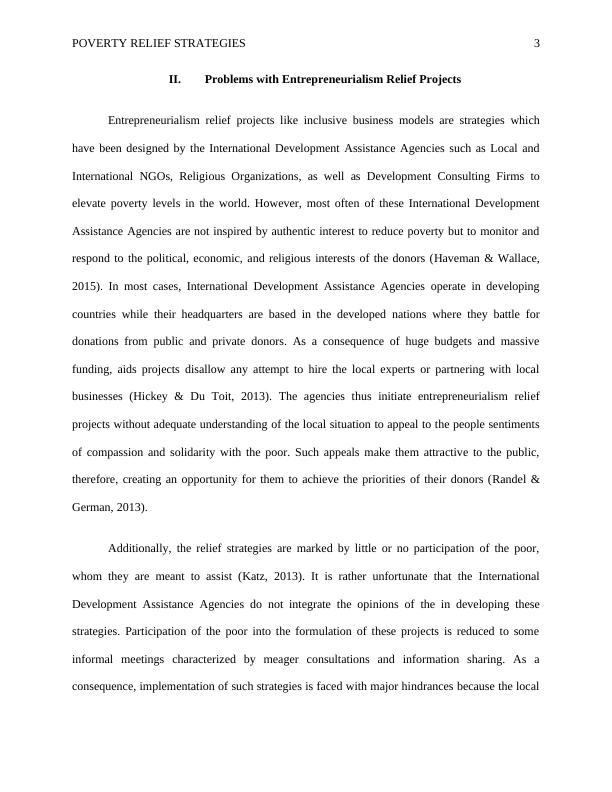Ask a question from expert
BSNS7340 - Poverty Relief Strategies : Project
Estonian Business School
BSNS7340 Organisational Strategies (BSNS7340)
Added on 2020-02-24
About This Document
BSNS7340 - Poverty Relief Strategies assignment, The last decade has witnessed a transformation in how financial aid is managed to impact the livelihood of the poor people. Initially, financial aid was given in the form of cash handouts. However, such a strategy was found to lack any impact on poverty reduction. Asa consequence, a new aid design was created. The design was crafted to assume entrepreneurialism aid relief projects in the form of inclusive business models, in which the poor are assisted to establish or improve businesses. The conviction was illumined by the reason that money is managed better once invested either in the form of physical or human capital.
BSNS7340 - Poverty Relief Strategies : Project
Estonian Business School
BSNS7340 Organisational Strategies (BSNS7340)
Added on 2020-02-24
End of preview
Want to access all the pages? Upload your documents or become a member.



